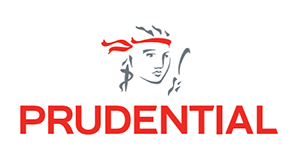OVERVIEW OF INVESTMENT CLIMATE
This section considers the current investment climate for potential investors and businesses already operating within Sierra Leone.
Non-Mining Economic Activity is Gaining Momentum
Sierra Leone’s economy continues its recovery from the 2014 twin shocks of Ebola and the collapse in iron ore prices. Growth returned to positive territory in 2016 (6.1%) after the economy contracted by 20.6% in 2015. However, growth has moderated to 3.7% in 2017, largely due to slow recovery in iron ore output and reduced government funding on infrastructure investment. The medium-term outlook is positive with growth projected to increase gradually to 5% in 2019 and around 6.5% by 2020. Non-mining growth is robust, supported by stronger agricultural growth. With agriculture now accounting for over half of Sierra Leone’s GDP, its performance will be critical to the country’s continued recovery efforts. The recommencement of iron ore production in February 2019 is likely to impact positively on growth. Sierra Leone faces significant macroeconomic challenges. The country continues to run large fiscal and current account deficits, while elevated government borrowing has pushed public debt higher. Inflationary pressures remain elevated, in part reflecting the passthrough from higher fuel prices and currency weakness. The new government, which came into office in April 2018, is committed to addressing the country’s macroeconomic imbalances through its MTNDP economic agenda which focuses on revenue mobilisation, and the effective management of public expenditure, public debt and the exchange rate. FDI flows are critical to sustaining Sierra Leone’s economic recovery. FDI flows have increased considerably, largely on account of increased investments into the agriculture and mining sectors. FDI inflows reached US$560m in 2017, the highest since the Ebola crisis. Along with the need for further investment in healthcare, education, sanitation and energy, other sectors such as agriculture and fisheries, construction, infrastructure and mining mentioned in the Key Sectors section offer significant opportunities for immediate investment. The outlook for the mining sector is improving. In February 2019, iron ore production resumed following the suspension of production in November 2017 due to high operating cost and cash constraints. Diamond production should remain robust, supported by improved global demand for diamonds. One of the country’s leading mining companies, Sierra Rutile Ltd, which supplies roughly a fifth of the global demand for rutile, finalised a merger with Iluka Resources – the largest producer of zircon globally – in December 2016. Iluka plans to invest US$300 million between 2017 and 2020 to expand and improve its Sierra Leone operations. The company is also considering further expansion options to further increase rutile output.
Investment Opportunities: Health, Education and Social Services
It is likely there will be a stronger focus on investment in social infrastructure in Sierra Leone going forward. Investment demand in the near term will largely focus on the increased provision of basic services to a population still recovering from the effects of Ebola. Investment in healthcare, education, sanitation and water are desperately needed.
Healthcare
The GoSL recognises that a healthy population and a well-resourced national healthcare delivery system are essential for socio-development and economic growth. An increased focus on healthcare will drive investment opportunities in this area supported by the GoSL’s intention to develop a robust policy and legal framework for PPPs in the health sector. There will be a great deal of investment potential in healthcare to expand and develop the current system to be better able to deal with any future epidemic quickly, as well as cope with healthcare needs on a much wider scale. Opportunities for PPPs include health facility management, health care service delivery in public hospitals and Peripheral Health Units and the establishment of a National Ambulance Service. As part of the GoSL’s increased focus on disease prevention, there are also opportunities to develop PPPs in waste management. There is further scope for investment in the manufacturing and distribution of drugs and medical equipment, training of health professionals and the provision of private psychiatry hospitals and facilities and other specialist clinics.
Education
Opportunities for investment include improving educational infrastructure in under-served communities and addressing gender, geographical and socio-economic disparities in access to education. The GoSL is also focused on improving technical and vocational education and there are investment opportunities in this area. A robust framework for PPPs in education is being developed and private investment is encouraged.
Social Services and Basic Necessities
Less than 20% of the country has adequate access to sanitation. Providing access to basic necessities such as clean water, food and sanitation is critical. Opportunities for investment include the construction of a new dam in Orugu to alleviate water scarcity, projects to increase the capacity of the Freetown Guma Valley dam, construction of bore holes in the provinces, and the development of water dams in seven major rivers.
Renewed Focus on Traditional Growth Sectors
Mining Sector
As mentioned above, iron ore production has now recommenced. Although recovering iron ore prices could weigh on any significant investment in the sector, opportunities nonetheless exist.
Agriculture and fisheries
Numerous opportunities for investment in agriculture and fisheries are outlined in the Key Sectors section. The new government has indicated its intention to develop this area and looks to be a key area of focus going forward. Agriculture now accounts for 50.3% of Sierra Leone’s GDP and holds tremendous potential. Sierra Leone receives good rainfall with fertile soil and has some of the best fishing waters off its coast.
Infrastructure and Construction
Investment opportunities continue to exist in improving transportation networks and energy productivity to enable the free flow of goods and workers. Improving infrastructure through the projects outlined in the Key Sectors section will be critical to supporting further economic productivity and growth in the post-Ebola period.



